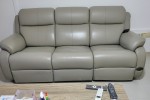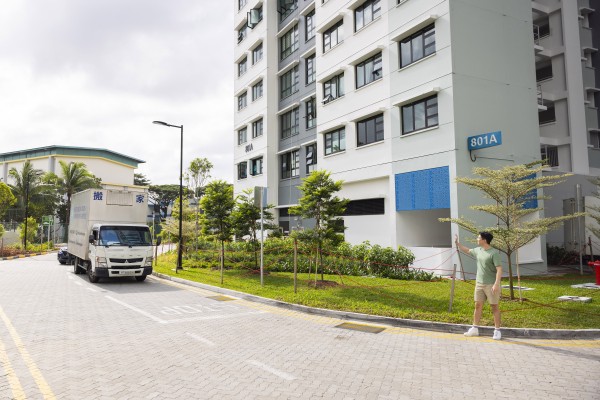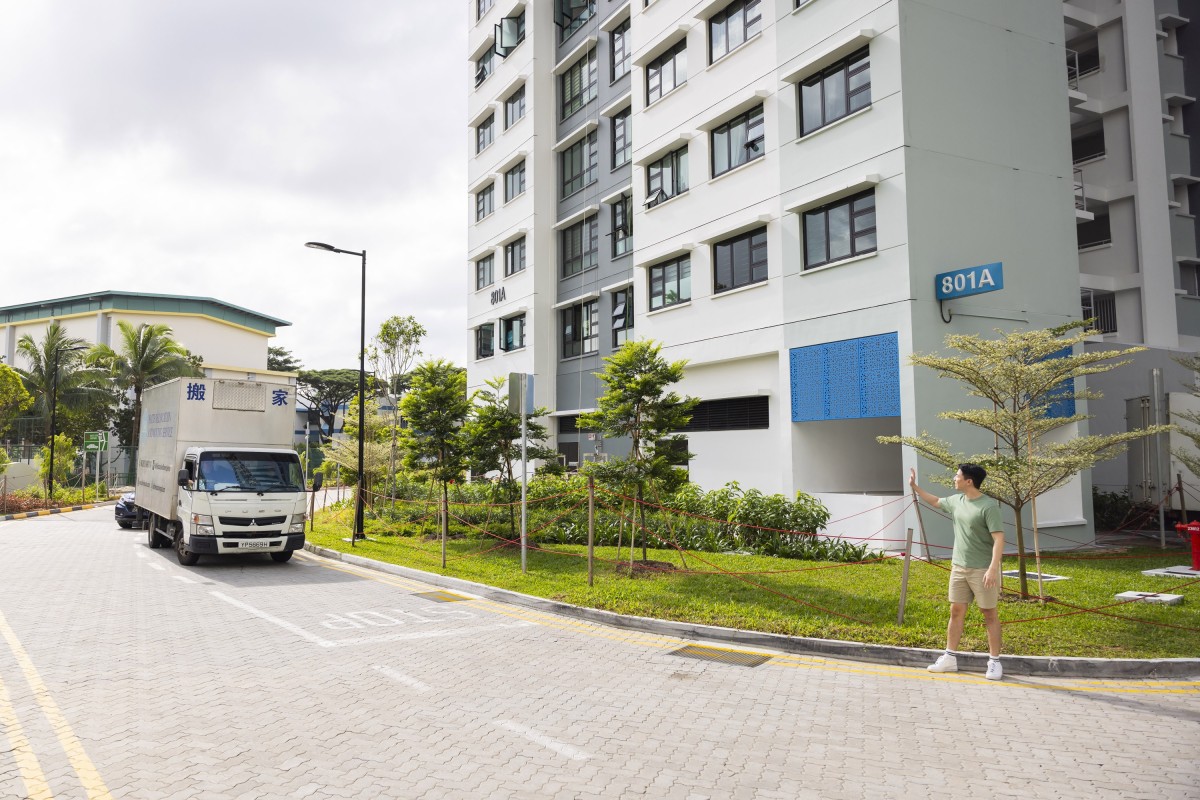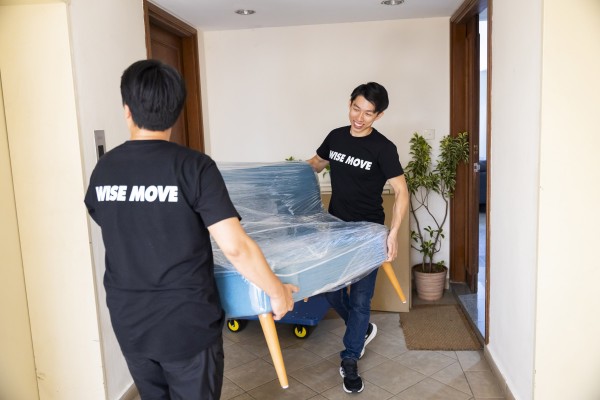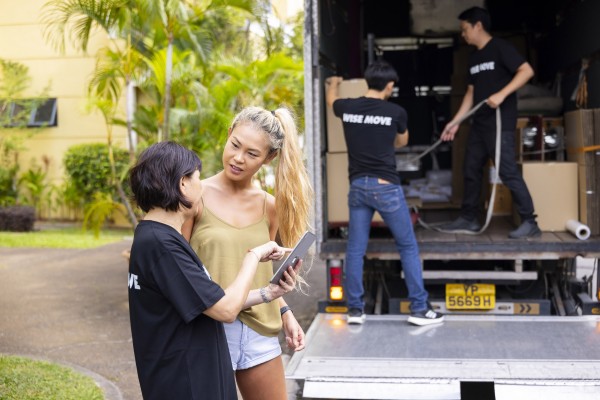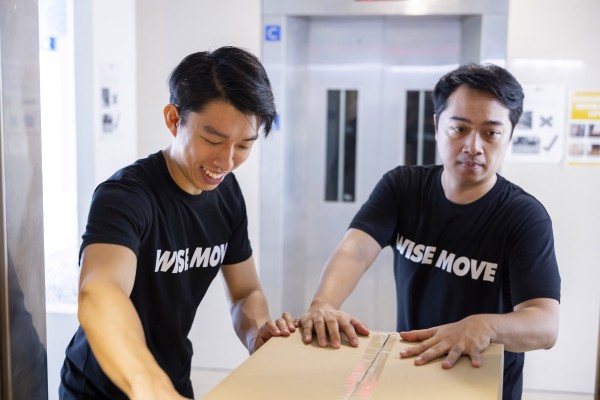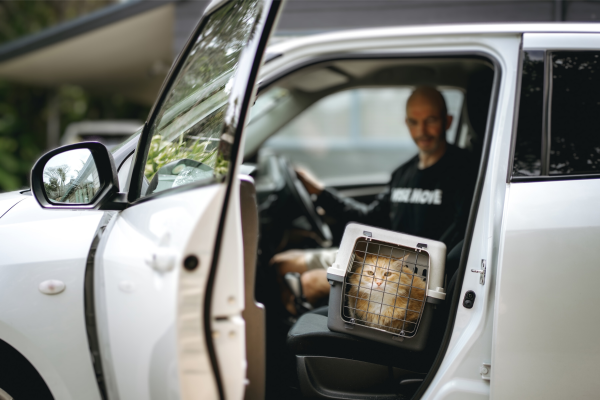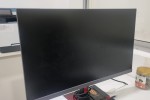The Guide On How To Move A Piano

In this guide:
Intro.
Pianos evoke shrewd comparisons with a double-edged sword. For all the melody, soul-soothing sensations, and life-altering epiphanies that they bring, they also have their dark side. And no. It’s not that their 8-octave, 88-key width means that you’re prone to hand cramps from yanking your fingers beyond their natural reach, or even that you could wake the neighbours while rockn’ it.
It’s the heavy-duty, high risk, and hassle that comes along with moving them.
Let’s face it. Moving pianos is one such chore involving household furniture that could leave you dumbfounded. It gets even worse when you don’t know the right keys to push (no pun intended).
If you fall under this category of persons, and you’re here because you’re seeking answers, then breathe a sigh of relief because we got all the tips and tricks you need to go from newbie to know-it-all.
To ‘DIY’ or to Hire Professional Movers?
Pianos are also known to be every bit as rugged as they are delicate to manoeuvre. With more than 10,000 moving parts, it’s not expected that the slightest slip can wreak deep-running damage on your piano. Plus, given that pianos may weigh anywhere from 130 to 450 (or more!) kg we strongly suggest enlisting the help of a professional moving company with piano moving expertise and movers you can trust. Pianos are often the most precious and costly piece of furniture in a person's house. A good piano may cost anywhere from tens of thousands of Singaporean Dollars to over S$100,000. Because of a piano's high worth, it's essential that it's handled with extreme care, hence requiring the use of expert movers.
However, if employing professional movers is out of your budget or schedule, most pianos may be moved with the assistance of friends. If you have a grand piano that weighs more than 450kg, we strongly advise that you hire a professional. These massive pianos often require specialized equipment and handling that only professional movers can offer. We also recommend hiring experts if there are any steep staircases or very tight corridors.
Piano Moving Kit
Piano moves, just like another top mission, you can ill afford to be caught lacking. That said, If you’re looking to move a grand piano, you might wanna call the professionals and sit this one out. If not, that’s okay. Just. Come. Prepared. You need your arsenal of weapons to conquer this mission!
We’ve reeled them out below:
A 4-wheel Piano Dolly; The first, and most vital of them all. Resist the urge to use Piano rollers/wheels for this job. They’re for inch-long moves. They don’t have the structural efficiency and ruggedness to endure the weight of distant moves like a Piano dolly)
Van ramp;
An upper body strength of at least 5 able-bodied friends;
Tape; (because what DIY-er could do without a tape?)
Weightlifting straps;
Moving truck (You could rent this. And Oh! You will be needing a trailer or rental truck (a pickup truck would be wayyyy too tall to lift your piano into)
Work gloves;
Plastic wrap (clothes can be used too!)
Dolly straps;
Cardboard pads;
Types of Piano (And How To Move Them!)
The extremely delicate composition of most pianos begs the question—how’re you going to know how to manoeuvre your Piano if you can’t tell its features? A successful move all begins with a get-to-know-you relationship with your piano, and we’re going to give you the deets on the various breeds of these black-and-white lovelies!
THE UPRIGHT / VERTICAL PIANOS
Upright pianos are typically 110cm – 135cm tall, 155cm broad, and 60cm deep, with the height being the most significant variation across all the different models.
Moving an upright piano requires a great deal of planning. You'll also want to make sure the piano keys and pedals are protected. You can do this by covering it with a blanket and fastening it with some tape. The piano should then be covered with moving blankets, which should be placed on the front, back, and sides.
You also want to secure all blankets in place with some tape. You and your crew can securely lift the upright piano onto the dolly after it has been covered with moving blankets. Make sure there is someone on both sides of the piano before lifting it. To minimize accidents, your moving crew should take extra measures, such as bending their knees to avoid back problems. Carry the piano to your moving truck with care after it's on the dolly.
GRAND PIANOS
For grand pianos, their size is what it says on the tin—they’re a largesse, with lengths ranging from 120cm and 280cm and weighing as much as 550kg. The smallest grand should have a total floor area allotment of at least 150cm broad by 190cmlong, including bench space. With the lid closed, the length of a grand piano is measured from the very front of the keyboard to the furthest end of the piano along the spine.
As part of your preliminary preparation towards moving grand pianos, you'll need various-sized screwdrivers to dismantle parts of the piano, moving pads to cushion and guard the piano, stretch wrap to safeguard the moving pads, moving straps to enable safe handling of the piano, and a piano dolly to transport your piano securely from your apartment to your moving truck.
To move a grand piano, you want to start by lifting the body of your piano onto the piano skid or four-wheel dolly once it’s completely covered. Afterwards, use the ratchet straps to attach the piano to the skid, then wheel it out of your house and into your moving vehicle or truck. If you’re moving it with your friends, then make sure someone is steering the piano from both ends of the piano skid or four-wheel dolly. We also suggest having one or two assistants to provide instructions, create a way, and serve as a spotter for the piano's sides.
Lift the piano's body off the skid and place it against one of the truck's walls once you’ve managed to get the piano on board the truck. Finally, attach the body by tying it to the slats on the truck's walls using ratchet straps. Wrap any things you've separated in moving pads and stretch wrap before loading them into the vehicle.
DIGITAL PIANOS
The term "digital piano" refers to a wide range of electronic keyboard instruments because the way it generates sound differs significantly. Instead of a hammer hitting a string like in the case of grand pianos, when you press a key on a digital piano, a sensor is triggered, and an acoustic piano recording is played via a set of speakers. Some versions of digital pianos are very portable, and some even operate on batteries.
Digital Pianos are the most straightforward to move, and the reason behind this is not exactly the science of rockets. It’s got two main complements—the stand and the keyboard. The digital piano should be reasonably easy to remove from the stand; it should be fastened in place at either corner. Before packing your portable digital piano, you first want to remove the pedal box and power adapter, else the inputs may be damaged, causing your instrument to malfunction. Before relocating the music stand, you should also remove it as they are a significant extra load that may fall out or get snapped off during transit.
Moving Pianos… In 3 stages
Well, there are certainly more than a few steps involved in moving this whale-ish furniture that you treasure, especially when you want to move it safely. The depths for creativity are bottomless. But as a rule of thumb, you want to start by first taking measurements to take stock of the precise dimension of the piano for meticulous planning of the relocation process.
The length of your piano is measured from the keys to the far back, known as the "tail of the piano." It's equally vital to use a solid measuring instrument and maintain it perfectly straight all the way to the end of the piano rim at the top of the tail for accurate length measurement.
To measure for the width, keep in mind that although some bigger concert grand pianos have a somewhat thicker rim and broader frame to handle the weight and strength distribution, the width of the piano virtually never changes.
An upright piano has a height of 110 to 135 cm, a width of approximately 150 cm, and a depth of about 60 cm. Keep in mind that these measurements fluctuate, and yours will most likely be somewhat different. The typical size, however, is 125/150/60 cm.
For Grand Pianos, the measurements vary since those come in different sizes.
— The length of a baby grand piano ranges from 120cm to 150cm. They're around 250 kg each.
— Medium grand pianos range in size from 150cm to 180cm in length. They're around 270 kg each.
— The length of a large/professional grand piano ranges from 180cm to 210cm. They range in weight around 320 kg.
— The length of a concert grand piano ranges from 210cm to 280cm. They range in weight from 400kg to 550kg.
The moving process features 3 stages: Pre-move, move, and post-move.
PRE-MOVE
You want to start by mapping out your path and clearing the route. You can measure the door frames using tape or a rope to ensure your piano will pass through. Then remove any obstacles, such as rugs off the route to avoid slips.
Wrap the piano with a blanket. To begin, tape the cover over the keyboard as a precaution. This is done to keep the lid in place during the trip. You may either use a plastic wrap or a large enough cloth to fully cover the remainder of the instrument. Tape the wrap in place.
MOVE
This is where the dolly comes into play as probably the most crucial piece of the puzzle. First of all place the piano on a dolly, you'll need to put on your work gloves and enlist the assistance of pals before lifting it.
If you've ever wondered how heavy a piano is, an upright piano weighs approximately 130 kg. A grand piano, by contrast, may weigh up to 500 kg. Lifting an upright piano on the dolly requires at least three muscular arms (and at least six for a grand piano). Professionals, on the other hand, utilize technological equipment to make it simple, safe, and stress-free.
With the dolly straps tied to secure the piano, make a push with the piano on the dolly.
If you’re using a moving van or a vehicle (that is huge enough to contain the piano), use a ramp. In the vehicle, the piano should be both dragged and pushed at the same time. You also want to use the lifting straps for this and be cautious while standing behind it and it weighs heavy enough to crush or injure you.
When placing the piano into the back of the vehicle, you should cover the floor with moving blankets. The piano should be positioned against the van's rear wall, with lots of other items in front of it. It's possible to secure it using furniture.
POST MOVE
One thing you want to do after moving your piano is to tune it. But tuning your piano depends on the kind of move. Moving from one side of the room to the other, or even from one room to another, seldom requires adjusting. In these circumstances, if the piano is moved with care, it’s highly unlikely that it falls out of tune.
But if it sounds different post-move, then you should decide if it requires tuning.
Moving the piano from one building to another is an example of a relocation that’ll mean that tuning is an absolute must. The detuning of a piano during a relocation is caused by a number of reasons. The shift in temperature and humidity from one building to another, as well as during the transfer, is the most important element (as most moving trucks do not have climate control).
Safety Tips (For you, your crew & your Piano!)
Allow us to drop this right off the bat — the ultimate safety tip is to hire professional piano movers. These guys have been there, done that, and they have the receipts to show for it. They know exactly what to do to ensure a safe, risk-proof move.
But when you’re doing this with your friends, here’re a few fun/safety tips for your next piano move:
- The vast majority of pianos, particularly grand pianos, are tilted when it comes to moving them. Although a piano may be moved on its side or back when moving, it is not recommended that you do so for any longer than is necessary. So, if at all possible, maintain your piano upright, particularly while moving it.
- Make sure there aren't any foreign items within the piano, such as hairpins, pennies or stray coins, or pencils. If they are kept inside, they may get stuck in areas that cause harm to the piano. If the hammers and strings are bouncing around throughout the motion, they may become damaged.
- Any part of the piano that will come into touch with another item, such as a dolly, should be covered with a blanket to prevent accidental scrapes and dents.
- Use ratchet straps long enough to wrap around the piano during the move. If it has the potential to slide or adjust while being transported, it will very certainly cause harm to the piano's finish. It is preferable to be excessively careful than to be insufficiently cautious, so there’s nothing stopping you from moving with some additional strap if you got one.
- While some pianos may have rollers, rolling a piano on its rollers is not a good idea. They are for minor changes and you should not use them to move the piano for you. The legs of an upright piano with rollers aren't strong enough to keep the piano moving while it's in use. Many pianos have been destroyed due to the misconception that one may just press on the piano without relieving the weight on the legs. To prevent damage, it is recommended that the legs be removed entirely. Roll it around with a PIANO DOLLY!
- Just like in everything involving teamwork, communication is everything. Have a plan so you all can work in unison. And you and your crew may also consider communicating your wish to take breaks. When pianos are dropped or slide suddenly, they suffer the greatest damage. If someone does need a break, everyone will need to put the piano down at the same time to avoid someone carrying too much weight at once. Don't underestimate the piano's weight or the effort required to get it to its final location. Overestimate manpower at all times. Like we earlier mentioned, you need the weight of at least 5 able-bodied lads to move those.
- Moisture is bad for pianos, and it may lead to costly repairs. So if you’re transporting those outside, you might wanna cover those in plastic due to rain or sun.
- Be aware of what you are wearing to avoid anything getting caught on your clothing. Not only do you want to avoid being distracted, but you also want to make sure that you won’t screw the move over due to baggy clothing that gets snatched at every turn.
How much does moving a piano cost in Singapore?
While it literally costs nothing to enlist the workforce of your ever-collaborative compadres, we strongly recommend that you employ a piano mover if your piano weighs more than 450kg (coughs in **grand piano**) Because of the instrument's weight, and that the sentimental and monetary value of the piano far outweighs the expenses of:
- hiring professional movers, and
- the expenses incurred from possible damage,
For these reasons, your piano move must be handled by the best in the business. Regarding the cost implications, distance, location and a few other variables have a role in determining how much it may cost to move your piano, but on average, regular upright pianos cost between S$100-S$150, S$300-S$500 for a baby grand piano, and somewhere in the ballpark of S$90-S$130 for a digital piano.
Prices are affected by factors like proximity to a moving vehicle and the availability of elevators, and also the company's pricing policy (some are hourly-based and don’t charge a fixed rate) To compare quotes, you want to speak with different moving companies.
What happens if your piano gets damaged during the move?
This is one of those very vital yet uncomfortable conversations to have with your piano movers before signing the dotted lines. The piano mover should have insurance that covers the piano move and also a separate policy that specifically protects musical instruments.
If your piano is damaged during the piano moving, the piano mover should pay for any repairs or replacements.
Conclusion
While buying your Piano is every bit as rewarding as playing it, the same cannot be said about moving it. But that’s why we’ve rolled out this cheat sheet for your use. Just follow these simple procedures we’ve mentioned, and you're on your way to successfully (and securely) moving your most-prized furniture.
Plus, when you’re done moving, give yourself and your pals a pat on the back, do well to soak in the moment of your well-deserved success. And if you’re such a wizard/witch of a pianist, it’s absolutely never out of place to chime in with your delightful artistry, and commemorate your accomplishment with a good ol’ concerto—think Beethoven’s Piano Concerto (No. 5) ‘Emperor’.
Happy. Days. 😉
What do our customers say?




